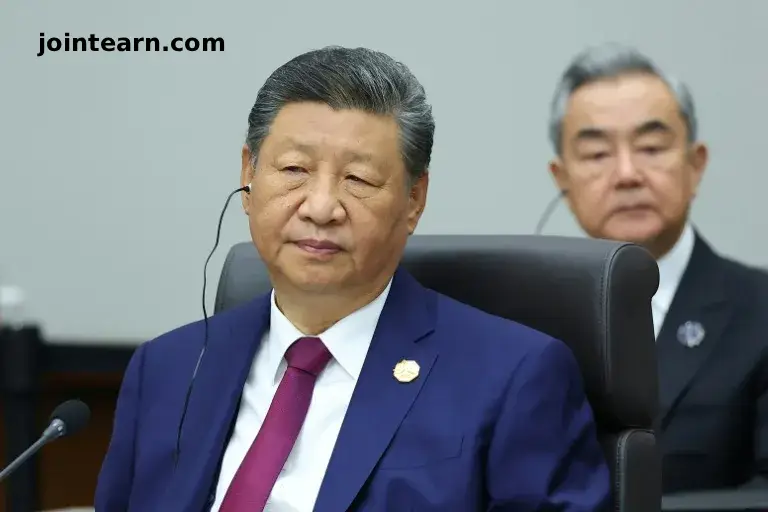
GYEONGJU, South Korea — October 31, 2025— Chinese President Xi Jinping extended an official invitation to Canadian Prime Minister Mark Carney to visit China during a landmark meeting on Friday, marking the first formal talks between the leaders of China and Canada in eight years.
The diplomatic encounter, held on the sidelines of the Asia-Pacific Economic Cooperation (APEC) Summit in South Korea, signaled an effort by both nations to thaw relations that have been frozen since 2017. The talks came just one day after Xi met with U.S. President Donald Trump and reached an initial understanding to de-escalate trade tensions between China and the United States.
A Renewed Effort to Rebuild China-Canada Relations
During their meeting, Xi praised recent efforts to improve bilateral ties, saying both countries have worked “toward a trend of positive development.”
“China is willing to work with Canada to bring China-Canada relations back to the right track,” Xi told Carney, while officially inviting the Canadian leader to Beijing.
Carney accepted the invitation and emphasized his commitment to “constructive and pragmatic dialogue” as a way to resolve current disputes.
“In recent years, we have not been as engaged,” Carney admitted, adding that renewed talks could help “build a more sustainable and inclusive international system.”
The meeting marked a rare high-level dialogue between Ottawa and Beijing following years of strained relations that began with the 2018 arrest of Huawei executive Meng Wanzhou in Vancouver and China’s subsequent detention of two Canadians on espionage charges.
Trade Frictions Still Loom Large
Despite the diplomatic thaw, economic tensions remain intense. In July 2025, Carney announced an additional 25% tariff on steel imports made with Chinese-origin metal. Beijing retaliated in August with a 75.8% customs duty on Canadian canola imports, a key export for Canada’s agricultural sector.
Canola is one of Canada’s top export commodities, used in cooking oil, animal feed, and biodiesel production. The tariffs have hit Canadian farmers hard, with industry groups estimating losses in the billions since China introduced the measures.
Both nations have also been caught in Donald Trump’s escalating global trade war, which has disrupted trade flows across North America and Asia. Despite the modest progress made during Trump and Xi’s meeting on Thursday, average U.S. tariffs on Chinese imports remain at 47%, according to Trump.
On Saturday, Trump announced another 10% tariff hike on Canadian goods and terminated ongoing U.S.-Canada trade talks, accusing Ottawa of funding a “fake anti-tariff” advertising campaign.
Carney’s Cautious Optimism
Addressing APEC delegates, Carney acknowledged the challenges of the current trade climate, noting that the “old world of steady expansion of rules-based liberalized trade” was no longer sustainable.
“That world is gone,” Carney said, calling for a new model of economic cooperation that emphasizes resilience, sustainability, and energy security.
He also highlighted Canada’s ambitions to become an “energy superpower”, particularly through expanding liquified natural gas (LNG) exports to Asian markets seeking alternatives to Russian and Middle Eastern energy sources.
Xi’s Diplomatic Outreach Continues with Japan
Following his talks with Carney, Xi met separately with Japan’s newly appointed Prime Minister Sanae Takaichi, the country’s first female premier. It was the first high-level meeting between the two since Takaichi took office earlier this month.
According to Chinese state media, Xi said that Beijing was ready to pursue “constructive and stable bilateral relations that meet the requirements of the new era.”
Takaichi, known for her hawkish stance on China and regular visits to the controversial Yasukuni Shrine, has recently toned down her rhetoric, signaling a more pragmatic approach to diplomacy. Nonetheless, she reaffirmed Japan’s concerns over China’s military activities and pledged to increase defense spending to 2% of GDP, two years ahead of schedule.
Japanese media reported that Takaichi planned to raise issues such as the detention of Japanese citizens in China, safety of expatriates, and tensions around the disputed Senkaku/Diaoyu Islands.
A Complex Web of Regional Tensions
Xi’s back-to-back meetings with Carney and Takaichi come at a time of shifting global alliances. Both Canada and Japan are close U.S. allies navigating the challenges of Trump’s protectionist policies while balancing their trade dependencies on China.
Observers say Xi’s invitation to Carney reflects a strategic outreach to middle powers amid intensifying competition with Washington.
“It could be a frosty get-to-know-you meeting,” said Yee Kuang Heng, professor at the University of Tokyo’s Graduate School of Public Policy. “But overall, stability is a shared priority, and both sides understand the importance of dialogue.”
Looking Ahead
While Xi’s invitation and Carney’s acceptance represent a diplomatic opening, analysts caution that substantial progress may take time, given the years of mistrust and ongoing trade disputes. Still, the meeting signals a tentative step toward rebuilding engagement between two nations whose cooperation will be crucial for the future of global trade, energy transition, and multilateral diplomacy.


Leave a Reply